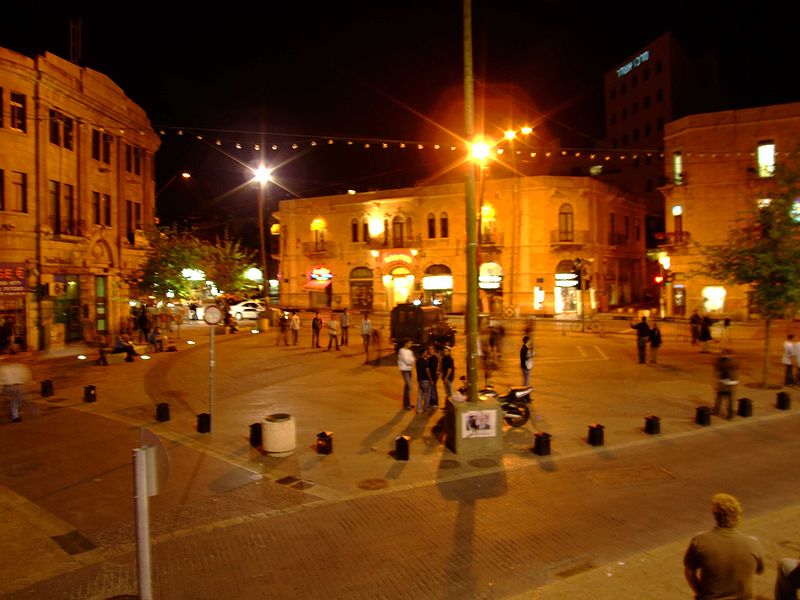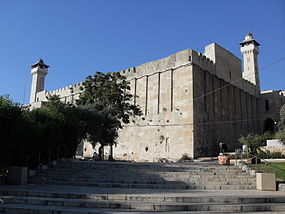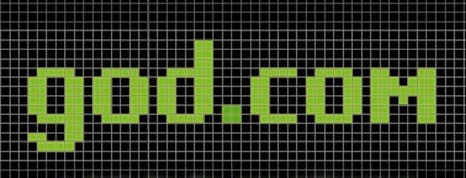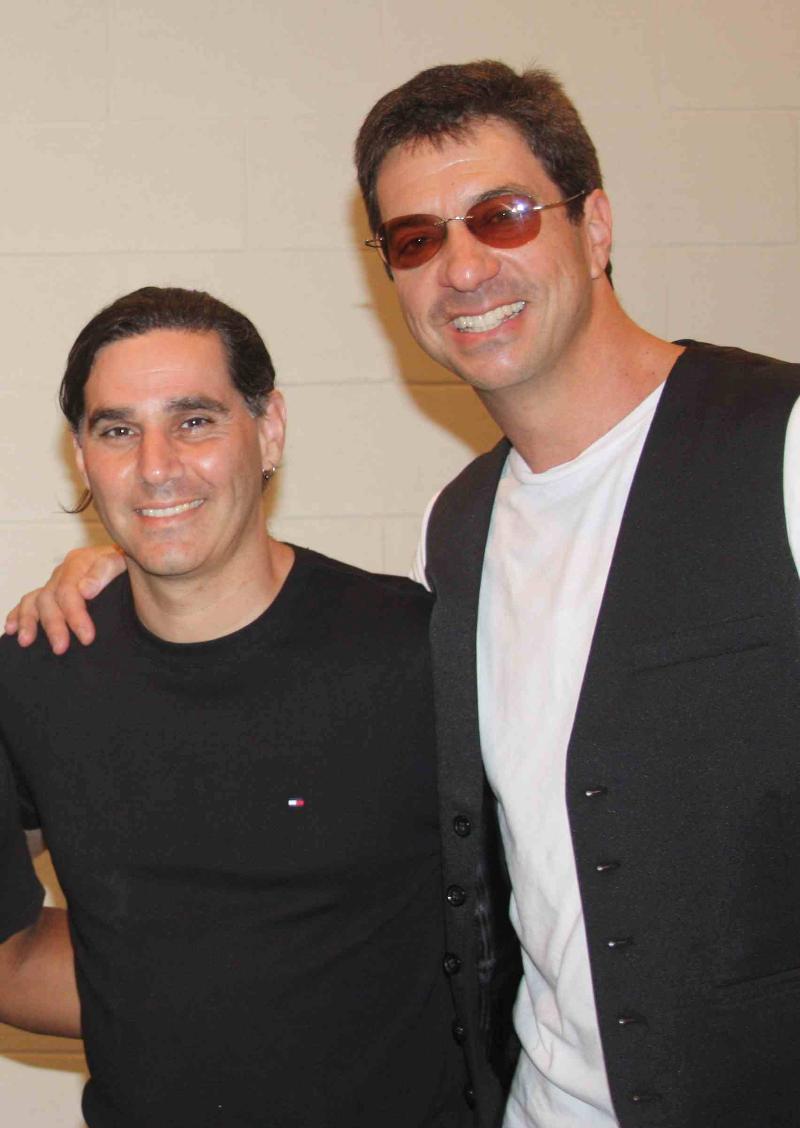By Sam Glaser
 As a teenager I remember the call as I walked down Kikar Tziyon (Zion Square) in Jerusalem. The call of “Mincha, Mincha,” rang out from the entrance of a small storefront shul. I would do my best to avoid the squat elderly man with a thick Sephardic accent that beckoned in the doorway. God forbid I have my afternoon fun interrupted with 10 minutes of boredom as I stood there pretending to pray. As a young traveler I did not have any tradition of the afternoon prayer ritual. At that point in my life I was aware of Shachrit, the morning service which I avoided since I saw it as far too long and inconvenient. I was familiar with Ma’ariv, the evening service from Friday nights at Camp Ramah. But Mincha? No, Mincha was a foreign word to me, lost in the same summertime wasteland that claimed Shavuot, S’firat Ha’Omer and the “Three Weeks.” If it was left out of our annual Hebrew School lexicon it couldn’t be something I needed to worry about.
As a teenager I remember the call as I walked down Kikar Tziyon (Zion Square) in Jerusalem. The call of “Mincha, Mincha,” rang out from the entrance of a small storefront shul. I would do my best to avoid the squat elderly man with a thick Sephardic accent that beckoned in the doorway. God forbid I have my afternoon fun interrupted with 10 minutes of boredom as I stood there pretending to pray. As a young traveler I did not have any tradition of the afternoon prayer ritual. At that point in my life I was aware of Shachrit, the morning service which I avoided since I saw it as far too long and inconvenient. I was familiar with Ma’ariv, the evening service from Friday nights at Camp Ramah. But Mincha? No, Mincha was a foreign word to me, lost in the same summertime wasteland that claimed Shavuot, S’firat Ha’Omer and the “Three Weeks.” If it was left out of our annual Hebrew School lexicon it couldn’t be something I needed to worry about.
All that changed after a eye-opening trip to Israel in my twenties when I fell in love with text study and Shabbat. At that point I hungered for more connection as long as the rituals didn’t take too much of my valuable time. I was careful to manage the balance of You-ish and Jew-ish: Too much of this Judaism thing might make me a freak, but a short minimum daily requirement promised to hedge my bets. Over the next several years wrapping tefilin in the mornings became a cherished habit and gave me the discipline to chew on those thorny Hebrew paragraphs until they were smooth like the worn black leather on my arm.
Mincha followed later. Much later. After all, who has the time mid-afternoon to stop all the action to pray? Didn’t we just say those same words in the morning? I’m a busy recording professional with clients and deadlines. I owe it to my customers to be focused on their music and not shuckling away in some secret hiding place.
Two factors inspired me to make Mincha the  centerpiece of my day. The first is my limited attention span. I’m a believer in “living by the mitzvot,” in other words, if I feel a certain mitzvah is “killing” me, I feel no remorse in minimizing it. Shachrit takes a long time and when I’m davening on my own, I take liberties with shortening the Pseukei D’zimra (opening prayers of praise,) for example. Mincha fits in this perfect 5-10 minute window of opportunity where I can dive in and then re-enter the workday.
centerpiece of my day. The first is my limited attention span. I’m a believer in “living by the mitzvot,” in other words, if I feel a certain mitzvah is “killing” me, I feel no remorse in minimizing it. Shachrit takes a long time and when I’m davening on my own, I take liberties with shortening the Pseukei D’zimra (opening prayers of praise,) for example. Mincha fits in this perfect 5-10 minute window of opportunity where I can dive in and then re-enter the workday.
Another factor is the power of consciously unplugging from my work to plug into my relationship with God. After I received my undergrad degree from the University of Colorado Business School I pondered continuing my education with an MBA. Many of my peers recommended that I should get some work experience in my father’s garment business and only then go back for an advanced degree. True, the MBA curriculum wouldn’t change, but I would change in that I would be better equipped to know what questions I had to ask and what real world business challenges needed to be overcome. Mincha is the same way…you are already out on the test track of life. In the morning your day is theoretical. By Mincha time, you know exactly what you are up against. For me, that creates more intense, deeply felt prayer.
In fact, interrupting the workflow has it’s own celestial merit. We are told in the Ethics of the Fathers that we are not free to desist from the work at hand but we should not feel compelled to finish it. As Rabbi Joe Black says, we must “leave a little bit undone.” A spiritual person has no qualms about asking for God’s help, bringing one’s Partner in Heaven into a very tangible relationship in all endeavors. Taking that break before the sun goes down on my workday allows me to fill my prayer with specific requests based on what I’m going through at the time.
 Our thrice daily prayer ritual reflects the contributions of each of our three forefathers. Avraham gave us the custom of Shachrit due to his early morning service reported in the Torah. Yaakov gave us Ma’ariv due to his intense nighttime experience on Har HaMoriah dreaming of ladders stretching up to heaven. We have Yitzchak to thank for Mincha. He is described as “conversing in the field” before the sun set when his besheret Rivka gets a glimpse of him for the first time. Likely this 30-something young man was praying hard for a wife. It’s no wonder that we too are “in the field” when we daven Mincha, either in the agricultural sense toiling the ground by the “sweat of our brow” or in whatever “field” we are engaged.
Our thrice daily prayer ritual reflects the contributions of each of our three forefathers. Avraham gave us the custom of Shachrit due to his early morning service reported in the Torah. Yaakov gave us Ma’ariv due to his intense nighttime experience on Har HaMoriah dreaming of ladders stretching up to heaven. We have Yitzchak to thank for Mincha. He is described as “conversing in the field” before the sun set when his besheret Rivka gets a glimpse of him for the first time. Likely this 30-something young man was praying hard for a wife. It’s no wonder that we too are “in the field” when we daven Mincha, either in the agricultural sense toiling the ground by the “sweat of our brow” or in whatever “field” we are engaged.
Yitzchak’s quintessential quality was gevurah or strength/discipline. That makes perfect sense in that this easily overlooked prayer service requires supernal discipline to break away from one’s workday. Once you get the ball rolling it’s hard to stop. Halacha demands that we do Shachrit before we eat breakfast which I believe is a great tactic to make sure we “wrap up” before we get wrapped up in our day. Once we get started in our eating/commuting/work routine it’s easy to forget matters of the spirit. Mincha, on the other hand MUST by definition interrupt the daily flow in order to complete it before the sky gets dark, and that takes tremendous discipline to achieve on a regular basis.
Mincha has three primary facets: Ashrei, a prayer where we butter God up, the Amidah where we ask for whatever we need, and then the Aleynu where we conclude by praying for God’s oneness and Tikkun Olam, the healing of the world. One might think we have already praised God so much in the morning that no more praise is needed, but the rabbis gave us the custom of a third repetition of King David’s Ashrei to get back into a mindset of gratitude. The popular Artscroll prayer book asks the reader to “concentrate intently” in only one sentence of the entire siddur, and that is the “Poteyach et yadecha” line of the Ashrei. This single sentence sets us up for a powerful prayer moment: God opens his hand and satisfies the desire of every living thing. When I’m hustling midday for gigs, when I’m feeling jealous of peers, when it seems that we’ll never have enough cash flow, I read this line and feel comfort. That, my friends, is reason enough to do Mincha.
Another feature of this special line is the idea that  God satisfies the desire of those with “chai ratzon,” in other words, those who have a will that is alive. So much of our day is often spent in repetitive tasks and drudgery. We take the same way to work every day, eat the same lunch, see the same faces. Our fire is slowly extinguished by the repetition of the “daily grind” and that ennui can soon turn into hopelessness. The idea of this line of the Ashrei is that YOU must take responsibility for keeping your will alive. Only you can change things around. Take a different way to work, get together with old friends, rediscover activities you enjoy, get physical rather than passive in front of a TV screen or a Facebook feed. Being truly alive requires more than just food, water and an occasional jaunt on a treadmill.
God satisfies the desire of those with “chai ratzon,” in other words, those who have a will that is alive. So much of our day is often spent in repetitive tasks and drudgery. We take the same way to work every day, eat the same lunch, see the same faces. Our fire is slowly extinguished by the repetition of the “daily grind” and that ennui can soon turn into hopelessness. The idea of this line of the Ashrei is that YOU must take responsibility for keeping your will alive. Only you can change things around. Take a different way to work, get together with old friends, rediscover activities you enjoy, get physical rather than passive in front of a TV screen or a Facebook feed. Being truly alive requires more than just food, water and an occasional jaunt on a treadmill.
In fact, Mincha offers the chance to flex our “will muscle” in the form of the Amidah where we align our personal will with the will of our Creator. (See my May 2012 newsletter on the power of the Amidah and it’s nineteen blessings.) For the advanced davener there is also the chance to have a daily Yom Kippur moment in the form of the brief Tachanun prayers. Finally, Mincha closes with the Aleynu, sending you back to the office with a reiteration of our Jewish mission statement and the satisfaction that you have just completed a sweet and vital mitzvah.
 My cherished custom every time I land in Florida is to head straight to the beach and jump in the glassy, warm water. The shock of the Pacific chill is absent…no wetsuit required…and the white sand unfolds to the North for hundreds of miles. Upon arriving on this last trip with my fellow Jewish singer and good buddy Todd Herzog, we dropped our bags at the beachfront hotel and davened a peaceful mincha (afternoon prayer) before jumping into the shallow blue-green playground. As we pondered the pelicans and sandpipers, Todd asked me some penetrating questions about why one would want to say the same exact words three times a day. He was curious what I get out of it. Am I was focusing on just getting the words out or am I actually thinking about meanings? Where do I add my own thoughts? And what happens on Shabbat when we stop making requests from God…what am I praying for then?
My cherished custom every time I land in Florida is to head straight to the beach and jump in the glassy, warm water. The shock of the Pacific chill is absent…no wetsuit required…and the white sand unfolds to the North for hundreds of miles. Upon arriving on this last trip with my fellow Jewish singer and good buddy Todd Herzog, we dropped our bags at the beachfront hotel and davened a peaceful mincha (afternoon prayer) before jumping into the shallow blue-green playground. As we pondered the pelicans and sandpipers, Todd asked me some penetrating questions about why one would want to say the same exact words three times a day. He was curious what I get out of it. Am I was focusing on just getting the words out or am I actually thinking about meanings? Where do I add my own thoughts? And what happens on Shabbat when we stop making requests from God…what am I praying for then? central prayer nearly 2500 years ago…and it was clearly already in use when they did so. Among their ranks were several sages of prophetic stature. They boiled down God’s will for the Jewish People in eighteen (later nineteen) crucial categories. When we repeat this menu of our deepest needs, we enact our partnership with God in bringing them to fruition. So central is this prayer to our existence that it is simply referred to as tefila (THE prayer) when discussed in the Talmud. The Sh’ma and psalms are important, but the Amidah is IT. I think Rashi says it best when he explains that l’hitpalel, or to pray, means to dream or think ultimate thoughts. We utter nineteen dreams for humanity and those dreams become part of us, defining our aspirations and clarifying our service to God.
central prayer nearly 2500 years ago…and it was clearly already in use when they did so. Among their ranks were several sages of prophetic stature. They boiled down God’s will for the Jewish People in eighteen (later nineteen) crucial categories. When we repeat this menu of our deepest needs, we enact our partnership with God in bringing them to fruition. So central is this prayer to our existence that it is simply referred to as tefila (THE prayer) when discussed in the Talmud. The Sh’ma and psalms are important, but the Amidah is IT. I think Rashi says it best when he explains that l’hitpalel, or to pray, means to dream or think ultimate thoughts. We utter nineteen dreams for humanity and those dreams become part of us, defining our aspirations and clarifying our service to God. there’s any place that you want to deeply focus and use the formulaic words of the millennia, this is it.
there’s any place that you want to deeply focus and use the formulaic words of the millennia, this is it.